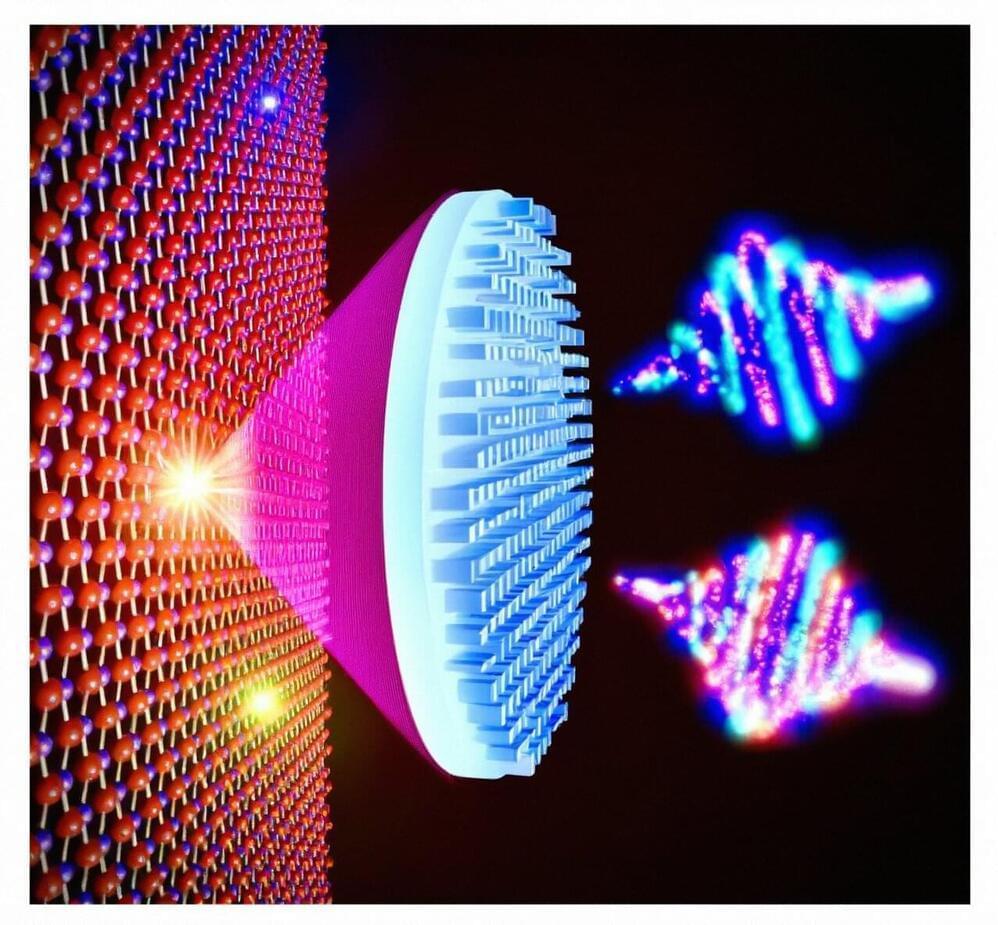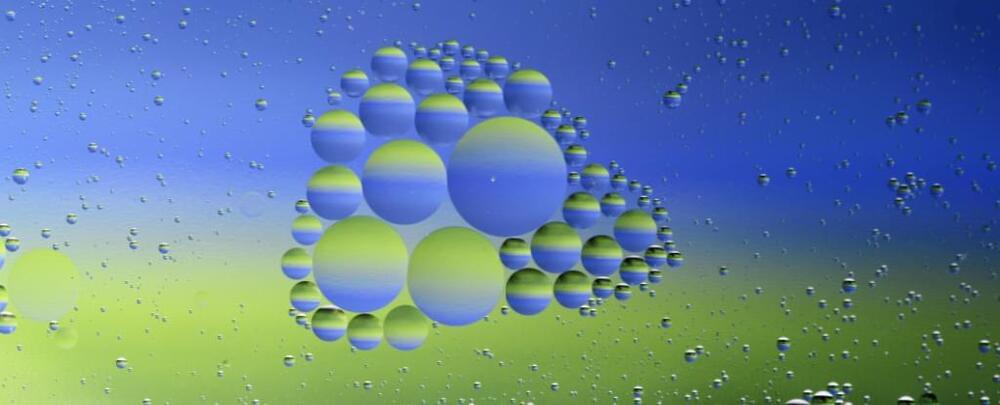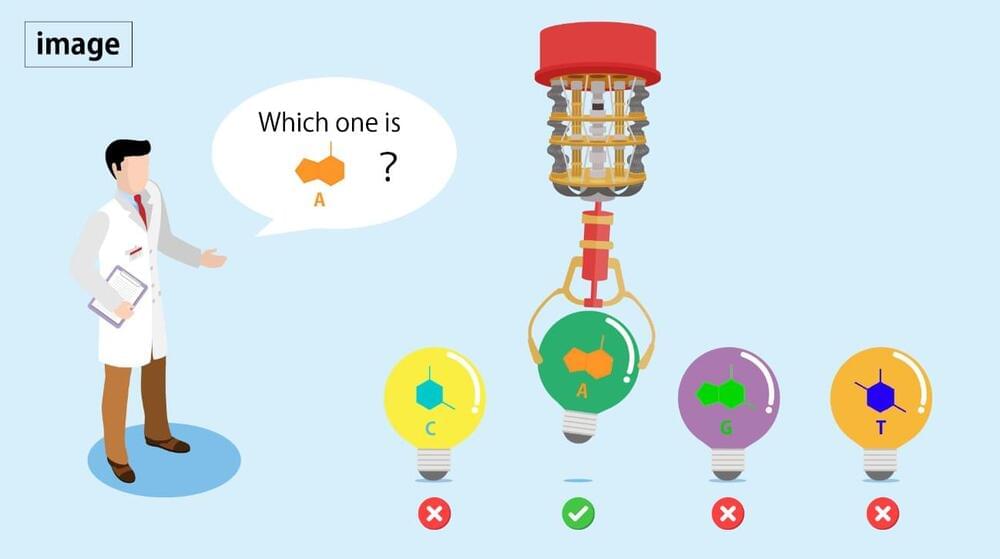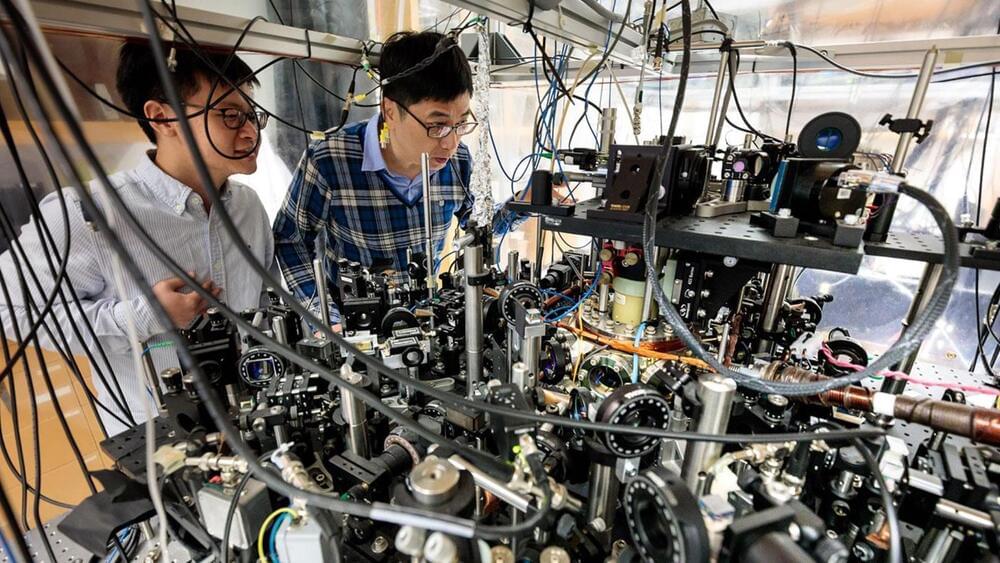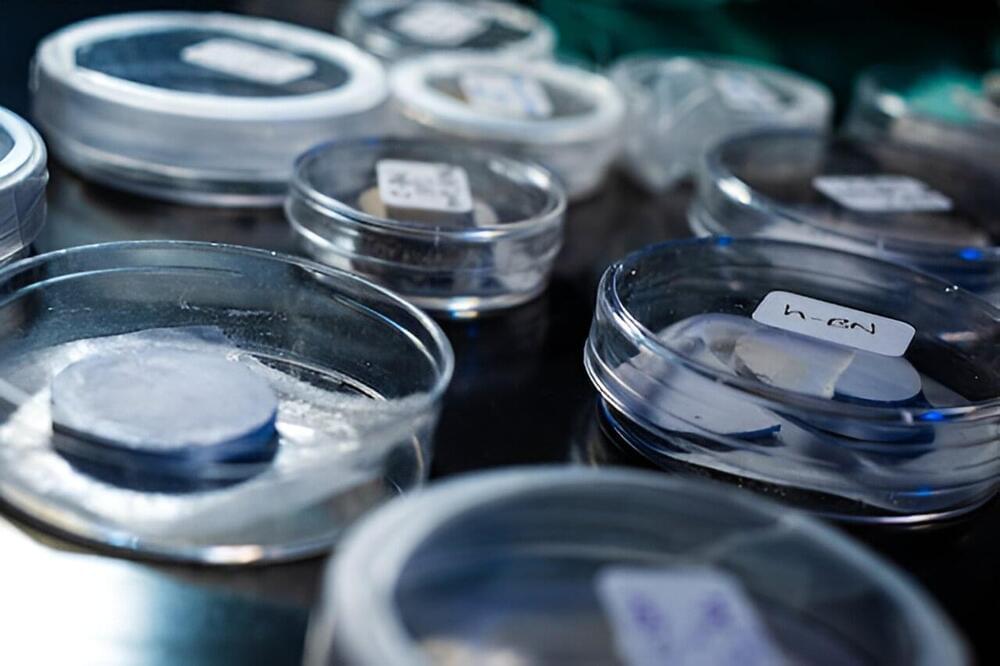Aug 9, 2023
New metalens lights the way for advanced control of quantum emission
Posted by Saúl Morales Rodriguéz in category: quantum physics
Quantum emission is pivotal to realizing photonic quantum technologies. Solid-state single photon emitters (SPEs), such as hexagonal boron nitride (hBN) defects, operate at room temperature. They are highly desirable due to their robustness and brightness.
The conventional way to collect photons from SPEs relies on a high numerical aperture (NA) objective lens or micro-structured antennas. While photon collection efficiency can be high, these tools cannot manipulate quantum emissions. Multiple bulky optical elements, such as polarizers and phase plates, are required to achieve any desired structuring of the emitted quantum light source.
In a new paper published in eLight, an international team of scientists led by Drs Chi Li and Haoran Ren from Monash University have developed a new multifunctional metalens for structuring quantum emissions from SPEs.
